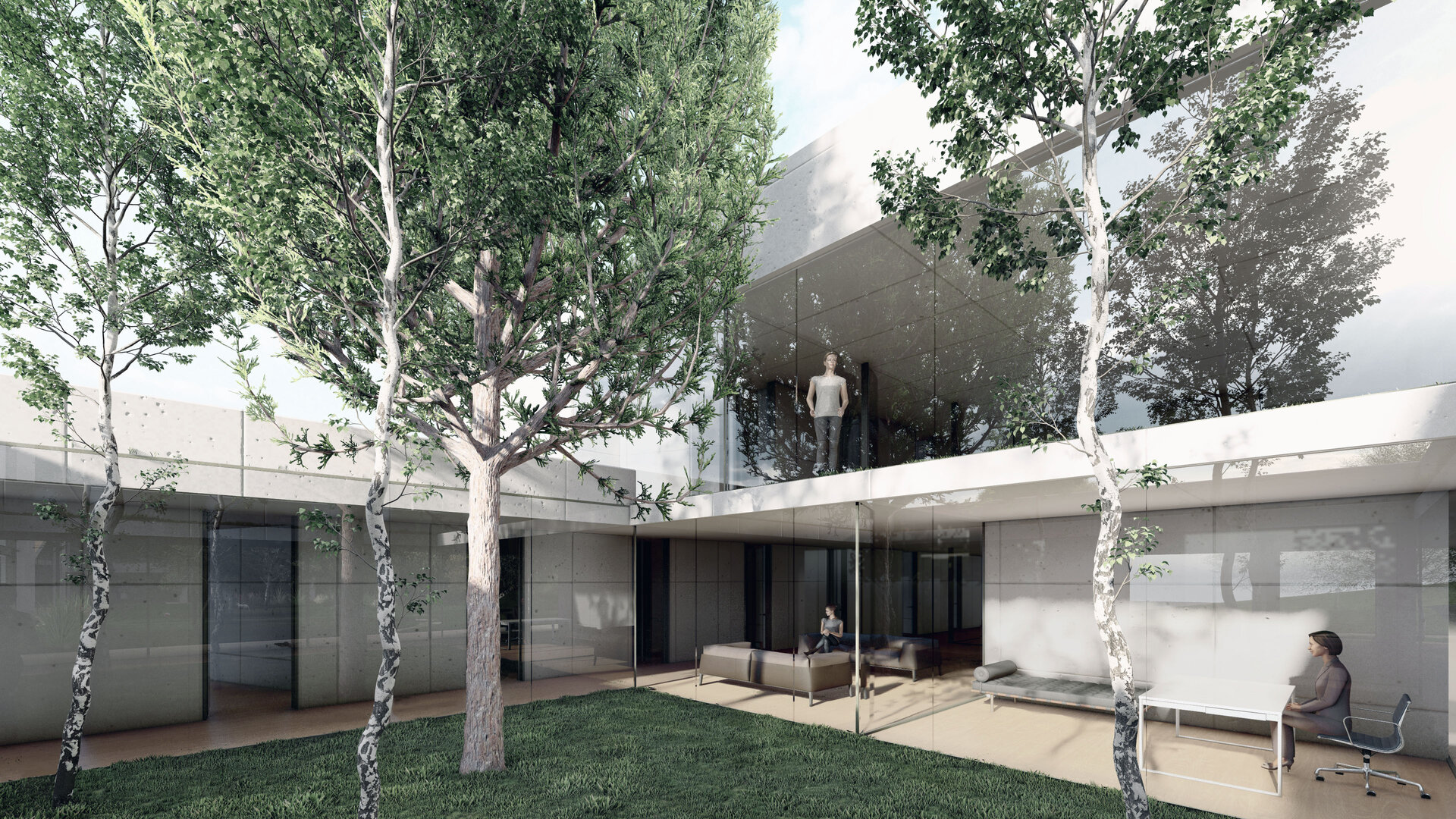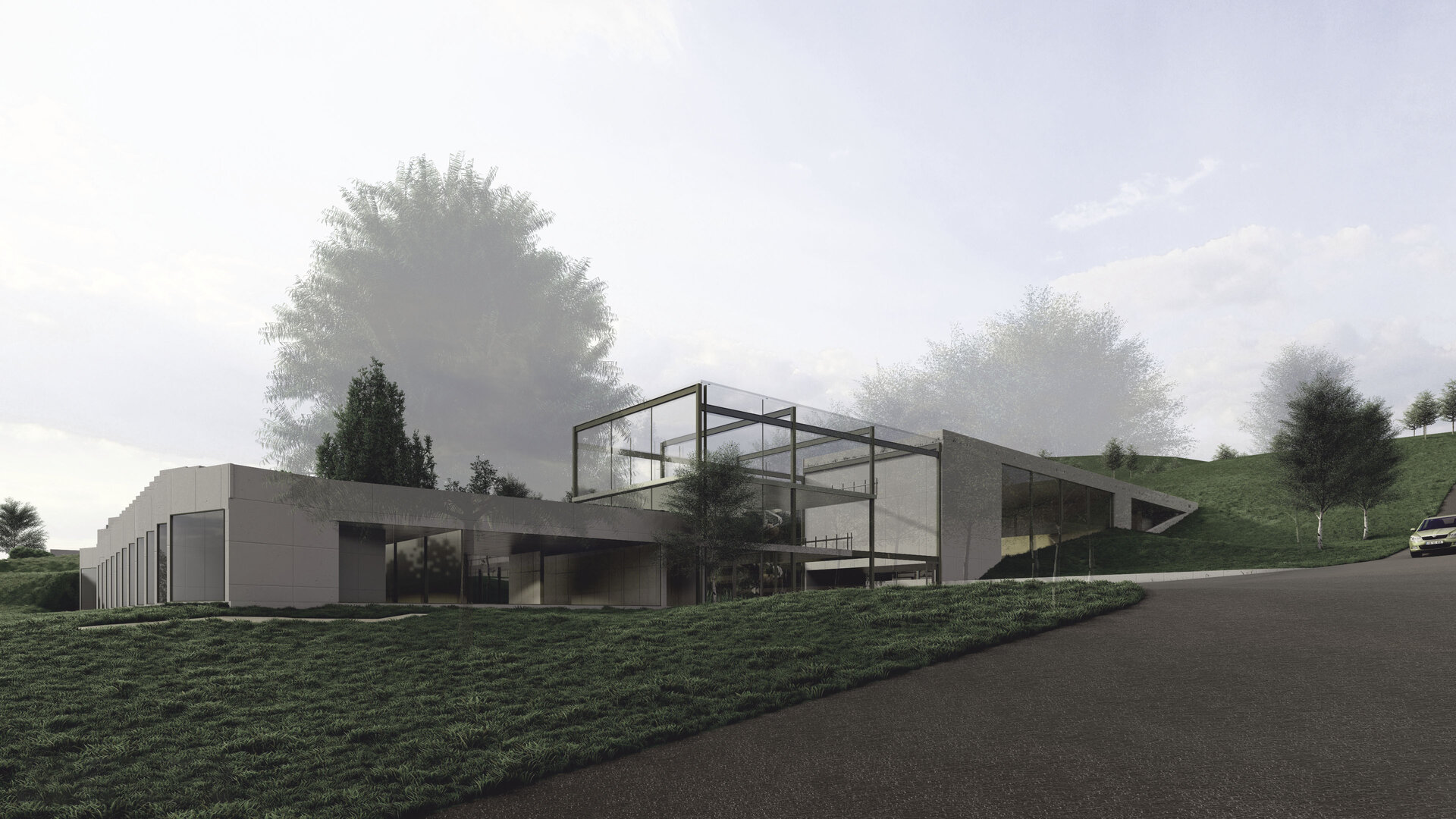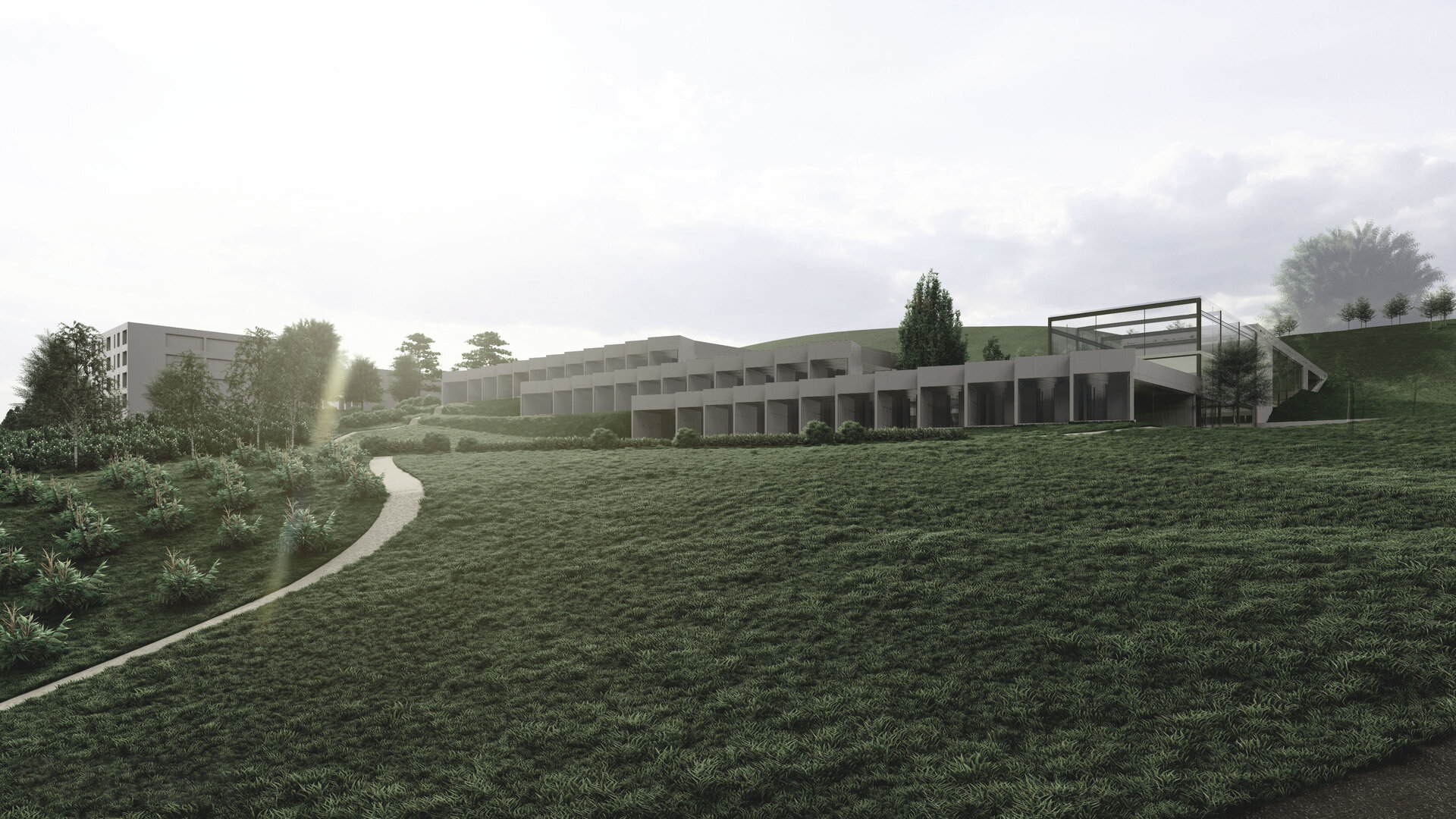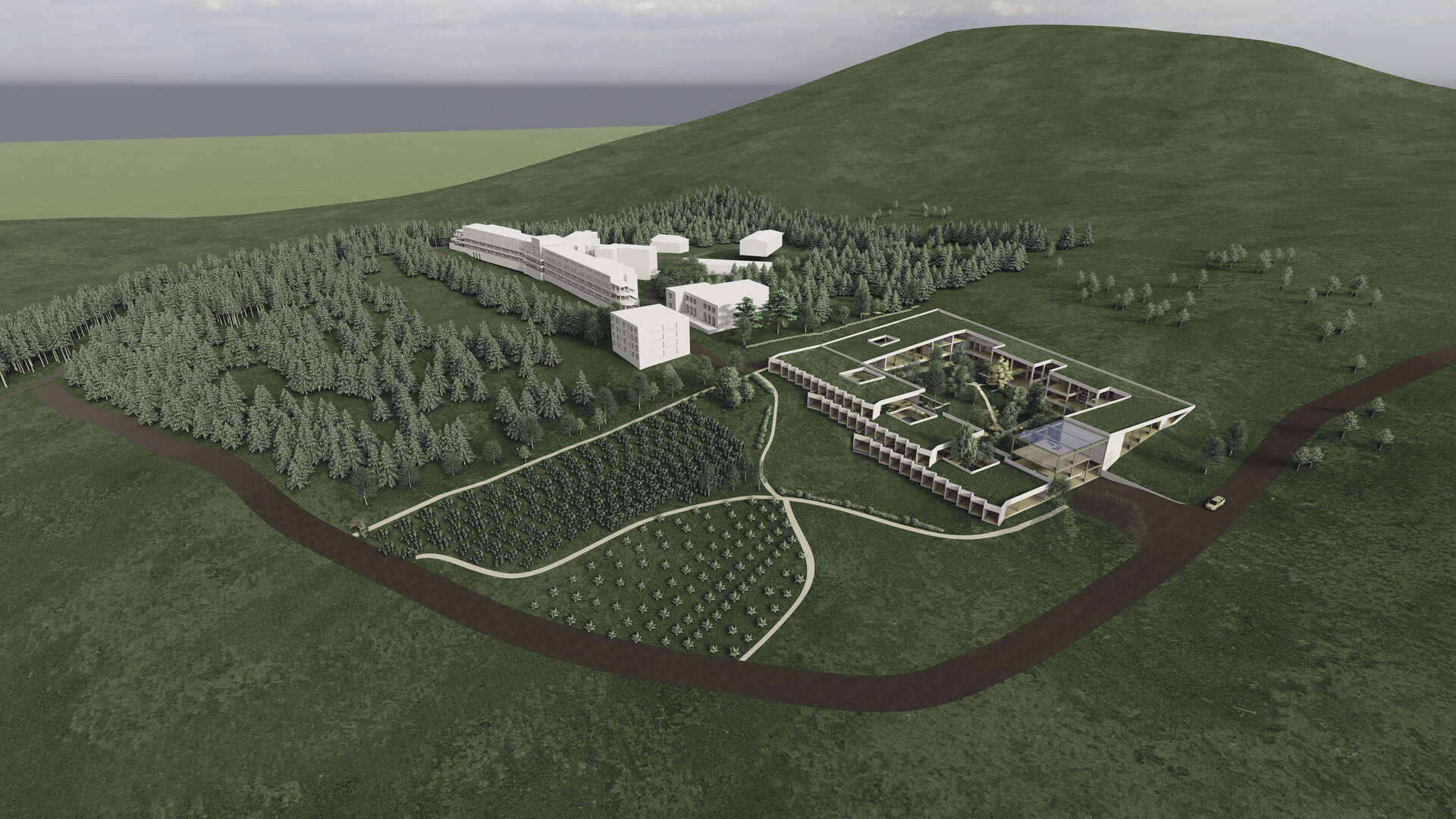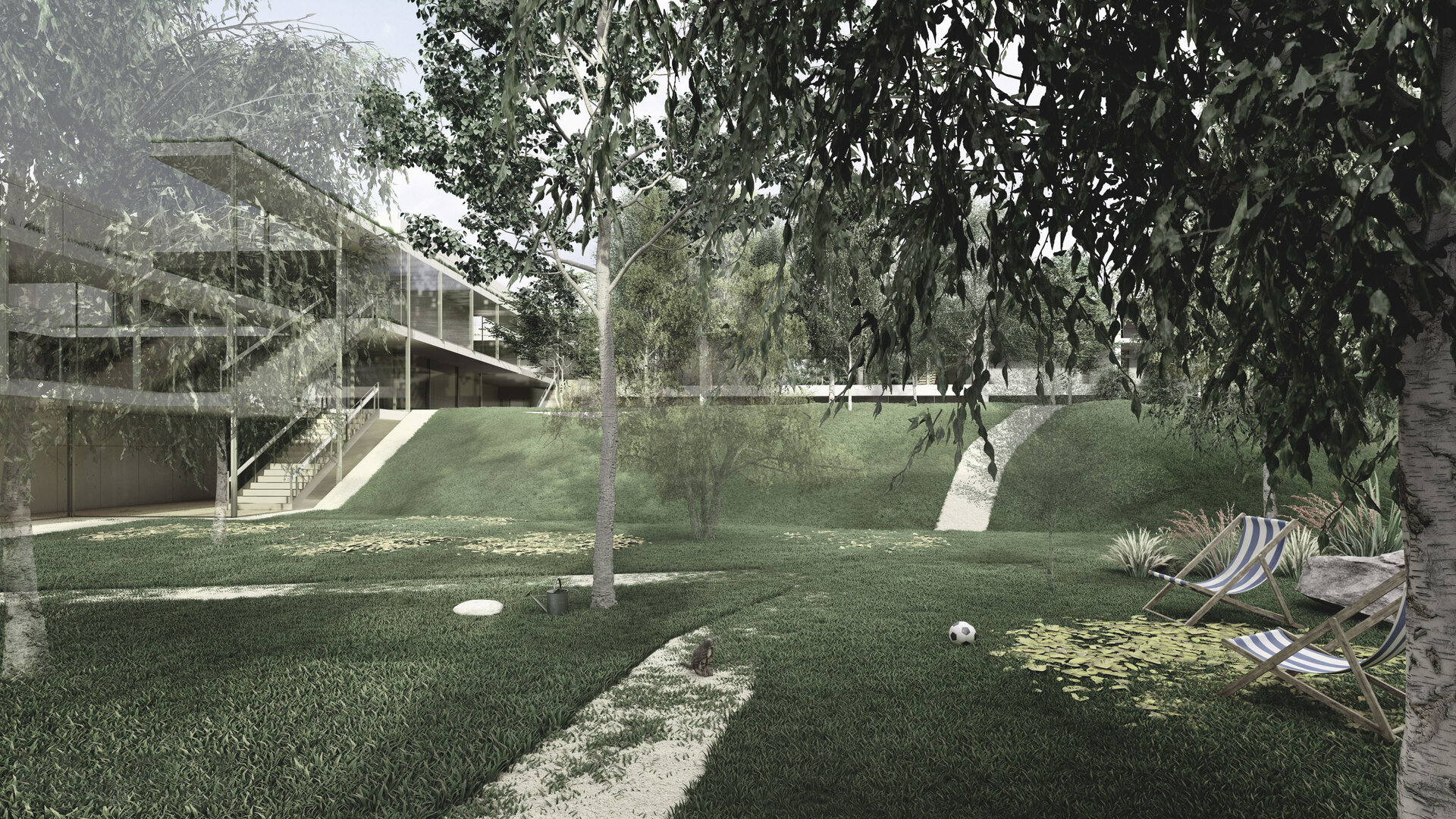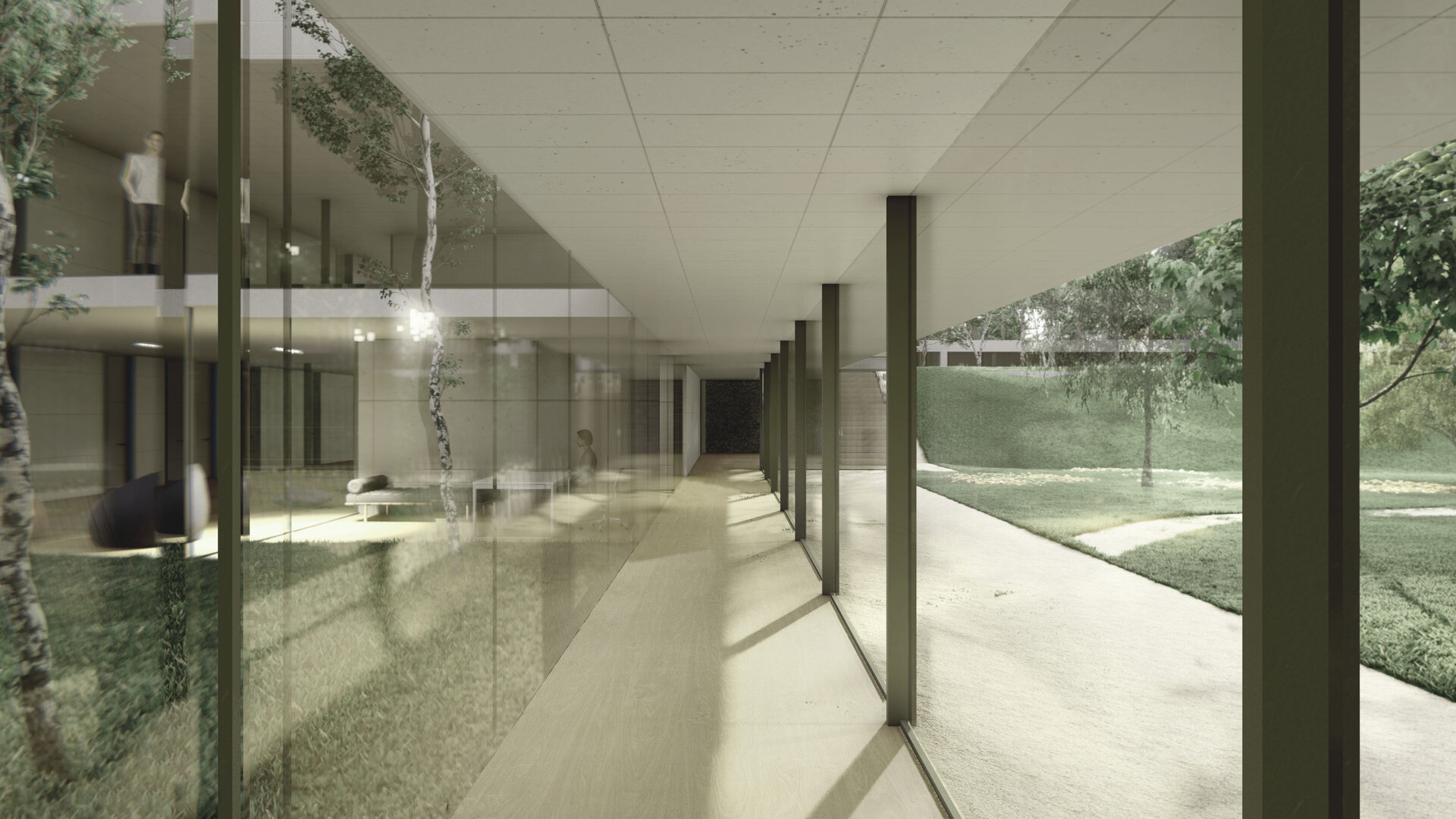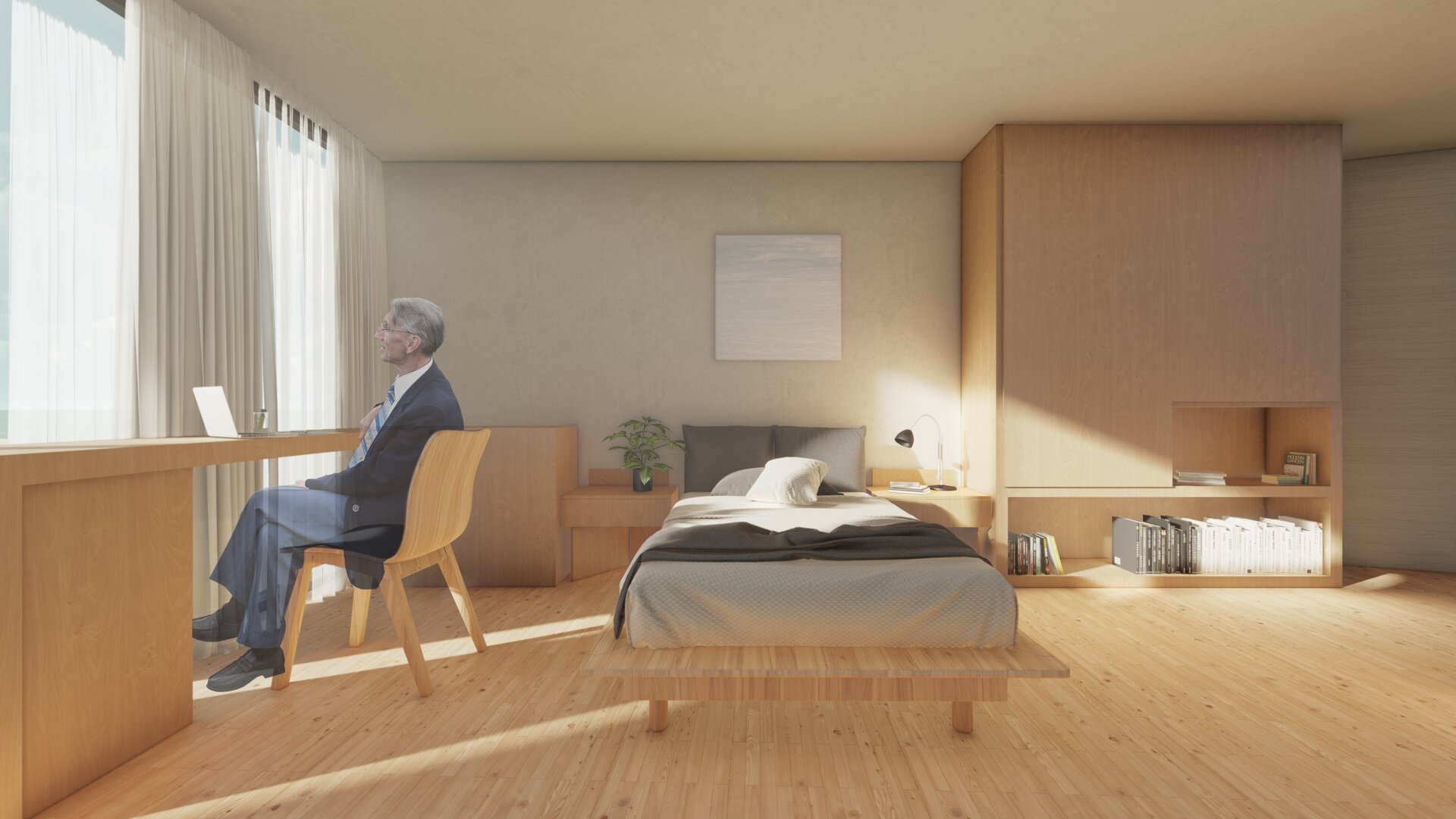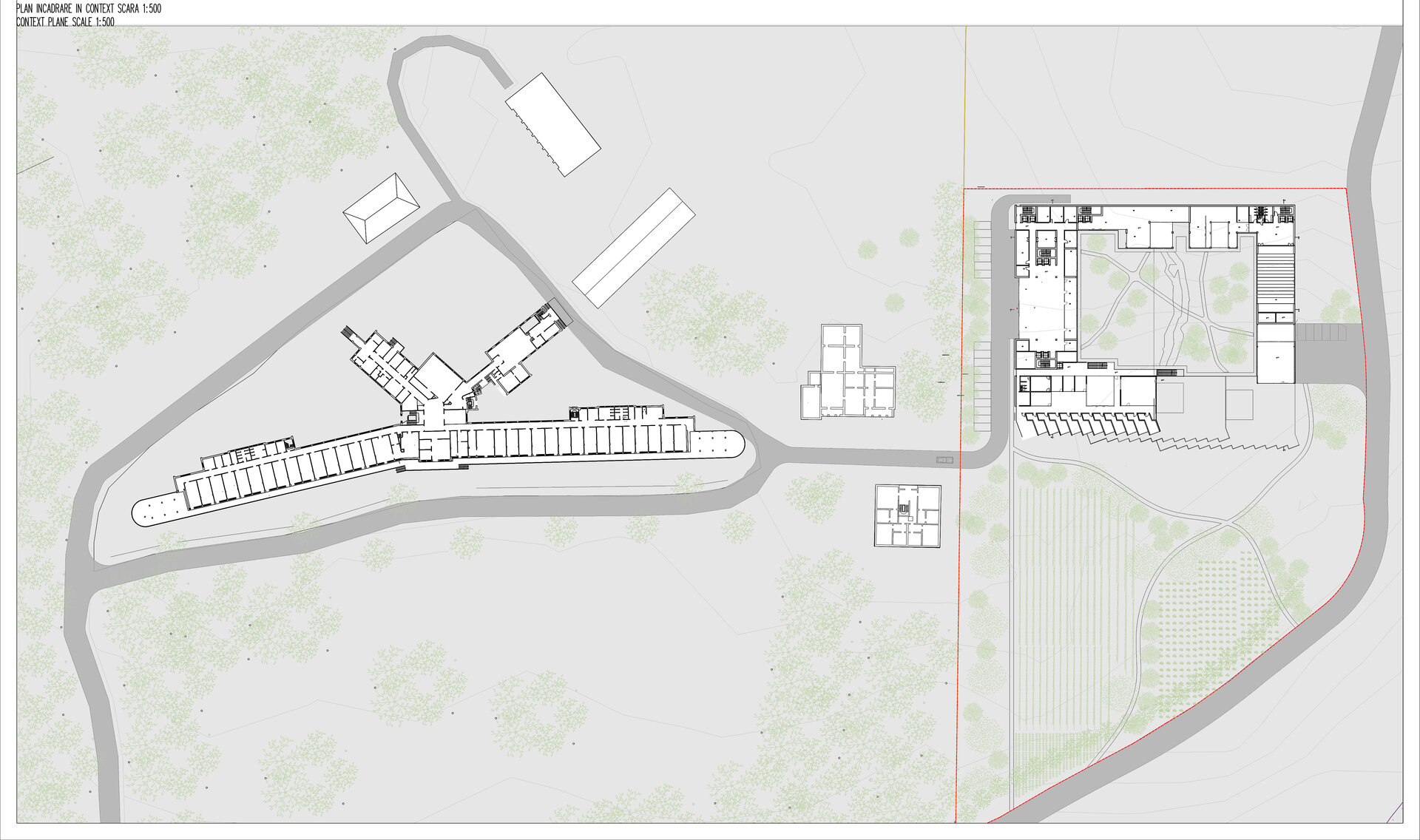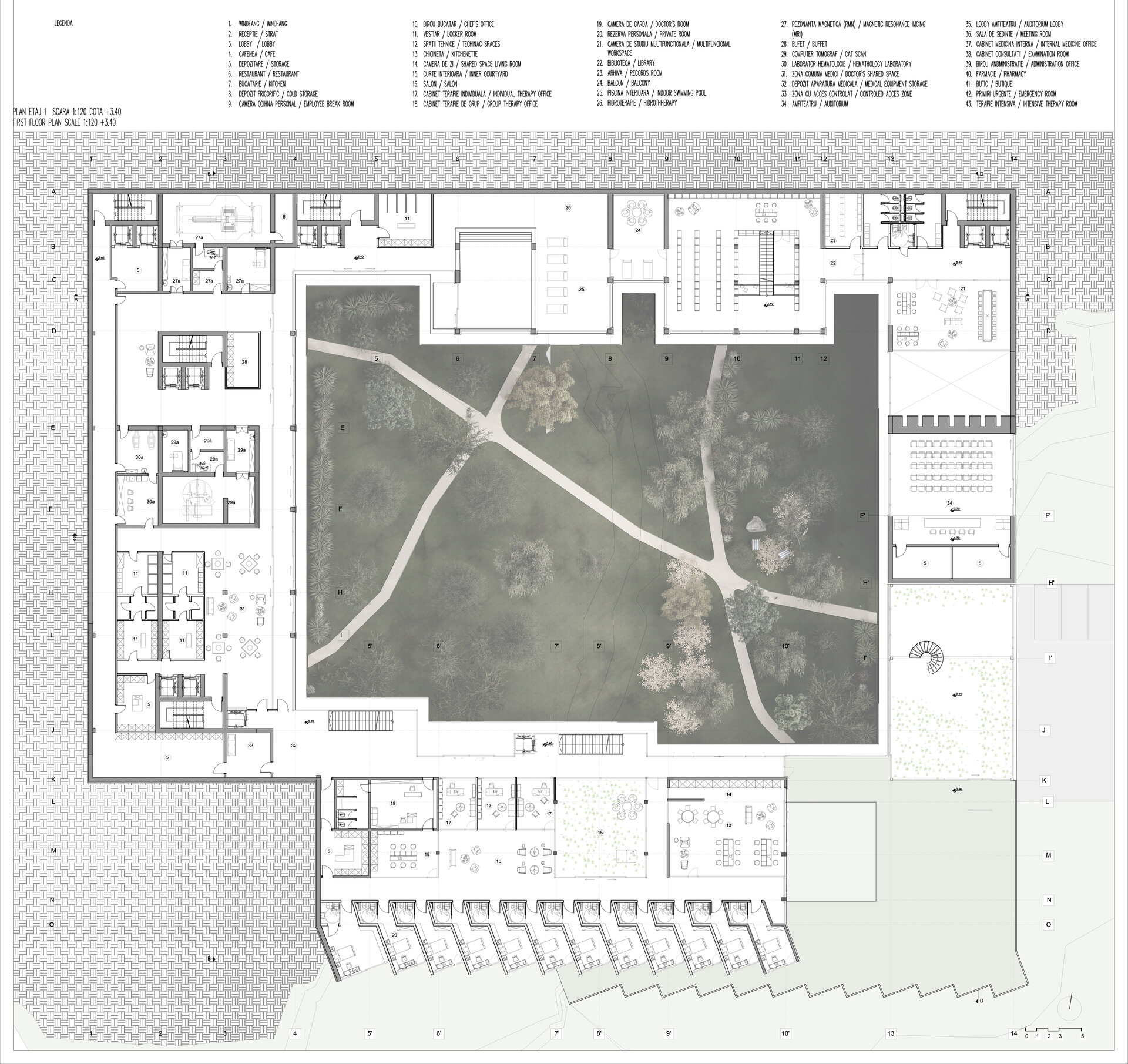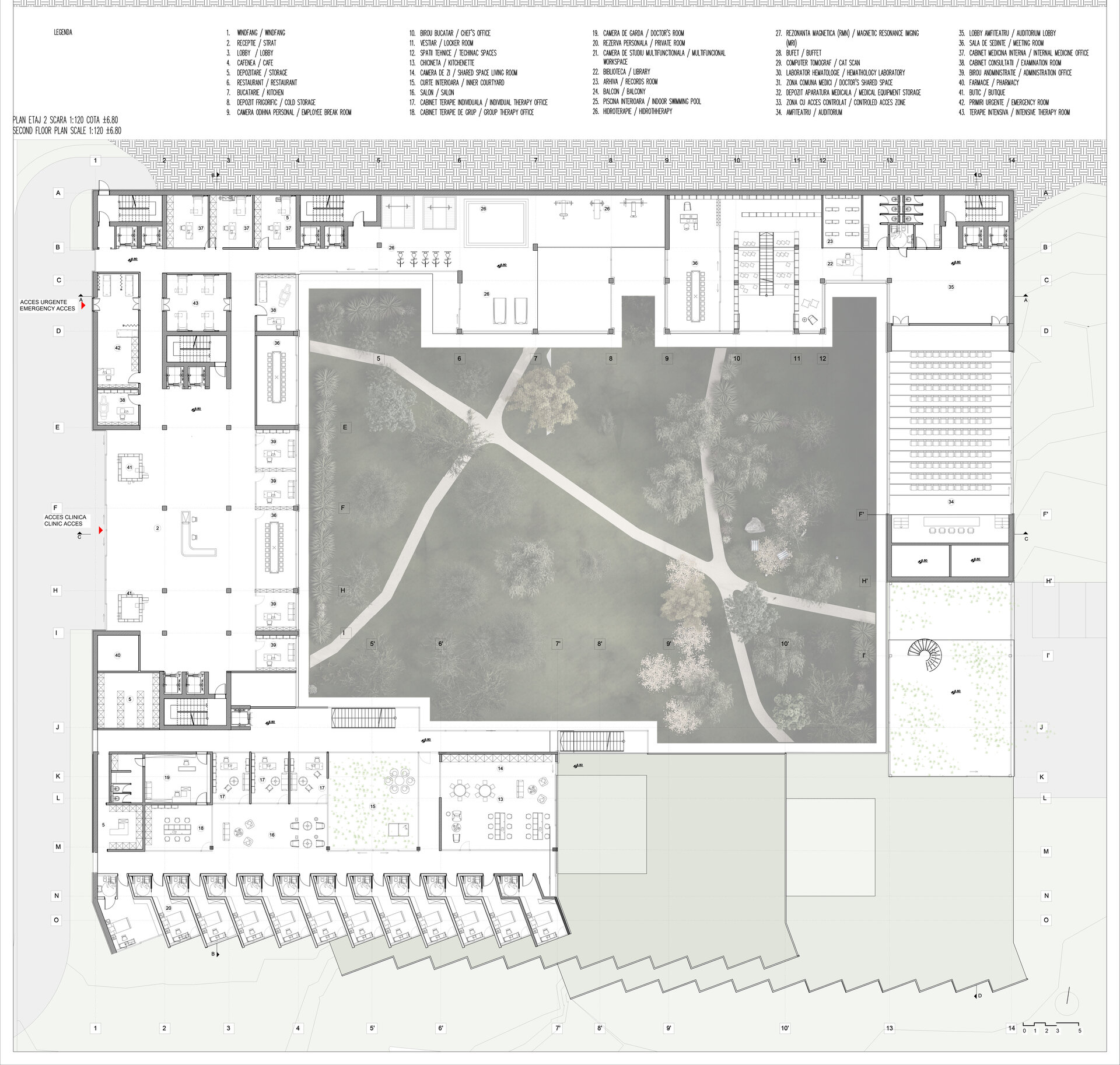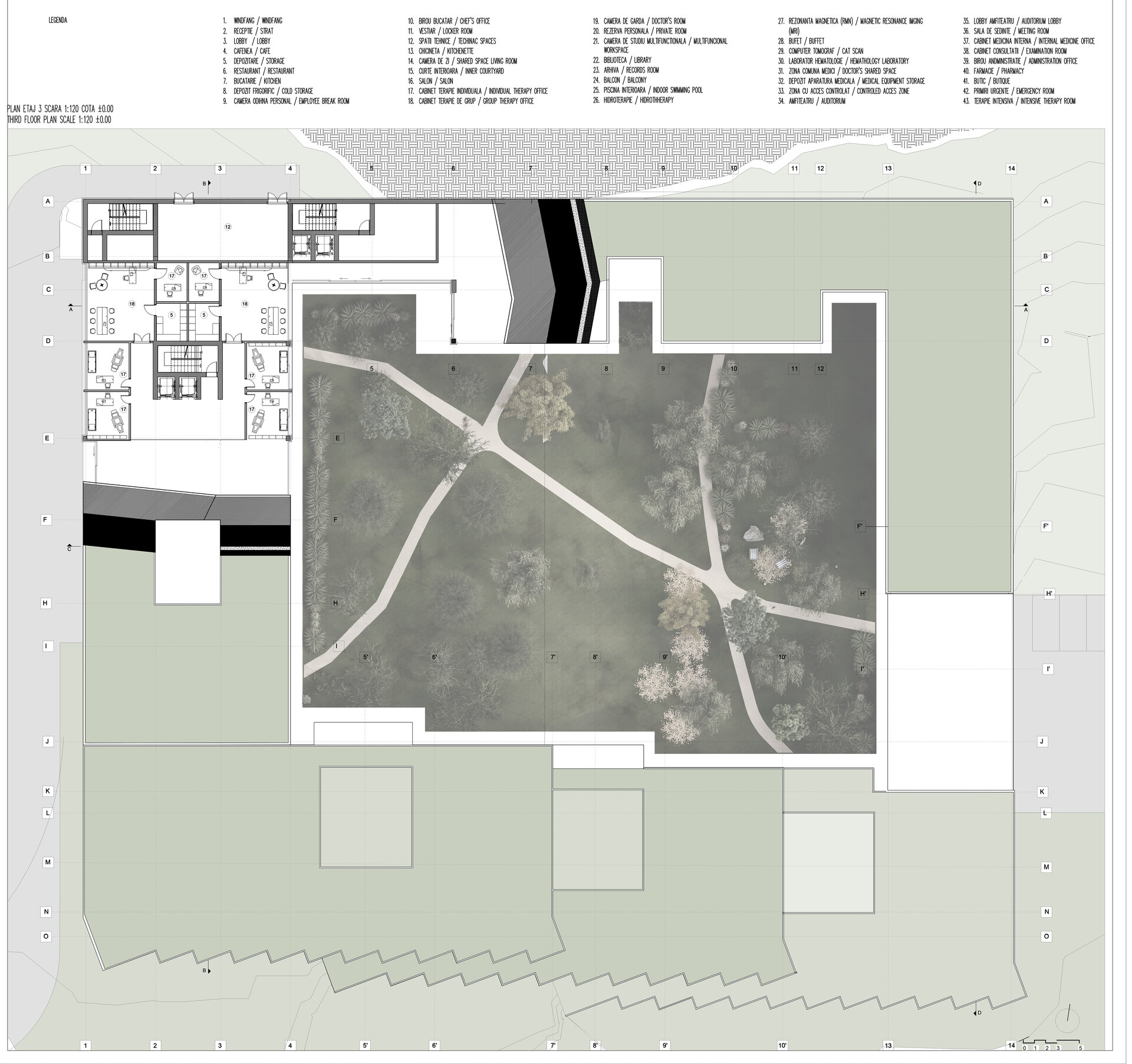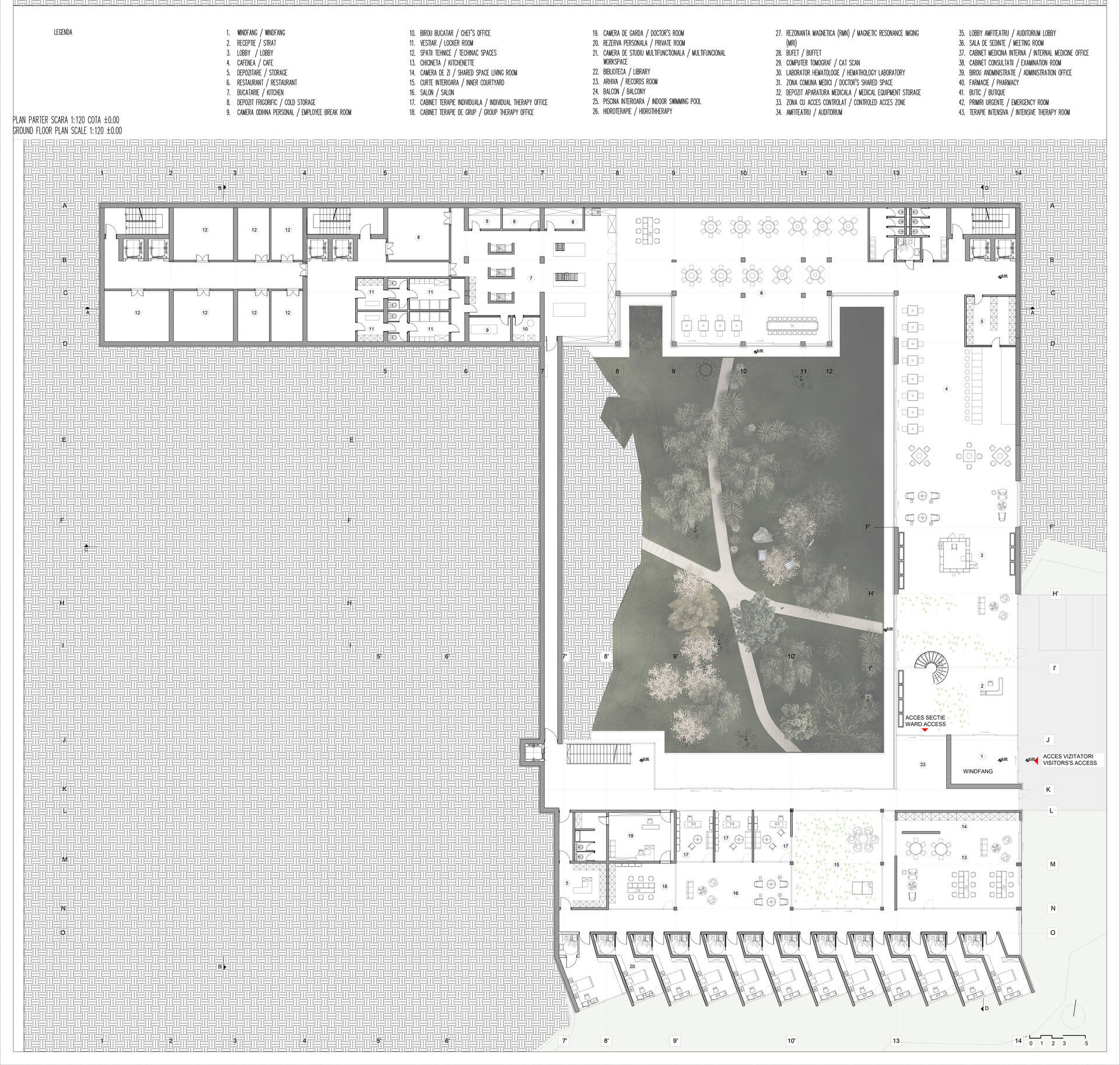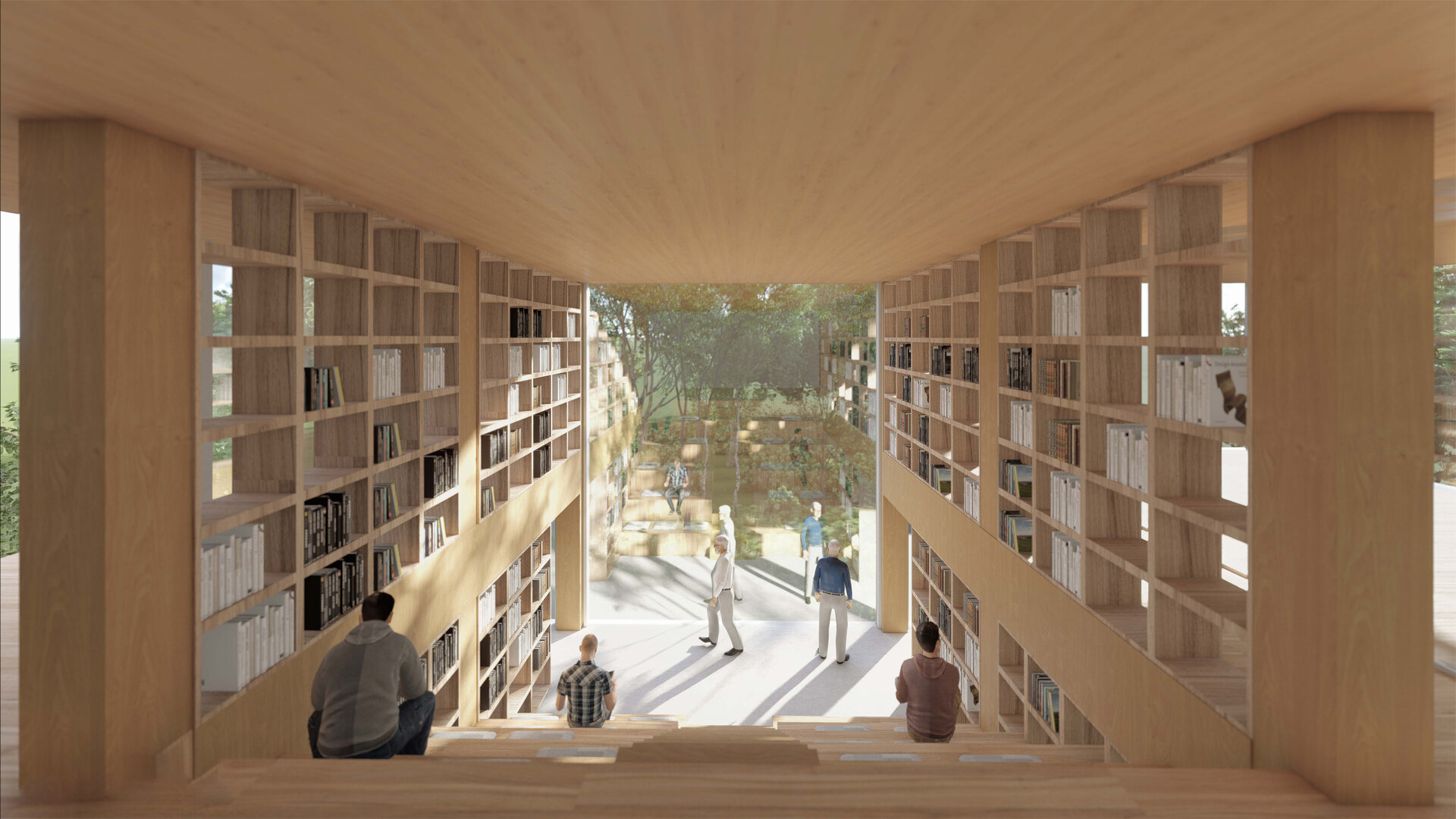
Treatement, recovery and research center for mental disseas
Authors’ Comment
ARGUMENT In a world where the number of cases of people developing mental problems is rising the current medical infrastructure is outdated. Contemporary treatment methods no longer find their place within the walls of the old sanitary buildings, the vast majority with an aesthetic similar to an institution of correction rather than healing
LOCATION There is not a perfect place for a psychiatric clinic. It is a debate is whether they should be isolated or, in the middle of the community. The most important thing is accessibility, once for the patient, but also for the relatives and visitors. The proximity to a fully equipped hospital is essential in case of emergencies. A vast natural environement is proven to be beneficial in the treatment of the mentally ill. The proximity to the Tudor Vladimirescu Hospital for Pneumophthisiology, from Suseni village, Gorj county meets all the described criterias for a center of treatment, recovery and research of mental illness.
The site with an area of 18,000 square meters is located in the new built-up area proposed by the new regulations from 2022, having as neighbors to the west the Tudor Vladimirescu Pneumoftiziology Hospital, and to the east the proposed road to be buid.
PROGRAM the main objective is to design an integrated treatment, recovery and research center that focuses on the wellbeing of patient and helps in providing a holistic treatment. The users of this clinic are patients with mild forms of mental disorders, mainly diagnosed with depression, anxiety, post-traumatic stress disorder and also people recovering from substance abuse treatments that have effects on mental health.
When talking about the treatment center, it is taken into consideration the necessary accommodation spaces for 45 people simultaneously, the treatment rooms, the common rooms (dining room, leisure), and gardens that facilitates the contact with nature. The research center is a place of study and learning. In addition, the research must be given to the world, so there is a need for conference spaces. Recovery means a completely different kind of spaces encountered so far in institutions specializing in the treatment of psychiatric patients. Workshops are needed (art therapy) reading spaces are needed (knowledge therapy), spaces for sports (body therapy) and especially spaces for the patient to redefint themselves.
INTENTIONS the project aims to designing a building in which every user feels safe, without perceiving physical barriers. Medical staff must be protected both from external dangers and from patients. The patient must be protected and supervised by medical staff. Visitors and relatives must be integrated into the treatment process. Contact with nature must be facilitated, so a succession of courtyards is welcome. The spaces must be designed in such a way that the patient does not feel enclosed and his stay is as short as possible. A very important feature of the intervention is the integration in the site and the relationship with the current Pneumophthisiology Hospital. Its medical facilities and the existing medical transport flows are much needed for the functioning of the clinic.
- Cultural Ensemble for the quarry-lakes of Jimbolia
- Human crematorium in Timisoara
- Earth research center. Sântana “Cetatea Veche” archeological site
- Ash - between spirit and matter - experimental area of culture
- Alternative Center for Performing Arts in Amsterdam’s Old Harbor
- Thermal Water Complex Baneasa Lake
- Dramatic Arts Centre on Luterana Street
- The Elisabeta Stirbey Institute - Choreography High school in Bucharest
- Center for treatment and relaxation. The revitalisation of Sărata Monteoru spa resort
- Workspaces on Luterană street - Bucharest
- Știrbei Vodă Housing
- Creating places in undesired spaces, Community Center in District 5, Bucharest
- Treatement, recovery and research center for mental disseas
- Revolution Memorial
- Old House - New House: The House of the Architect. Architecture Center in Constanța
- Emphasizing the local specific. Tourist retreat in the Apuseni Mountains
- Olympic Pool at Strandul Tineretului
- Conversion and extension of industrial heritage. Turda brewery factory
- The rehabilitation and extension of the Știrbei Palace in Bucharest. Relocation of the National Museum of Contemporary Art
- The conversion and extension of the Kretzulescu Ensemble from Campulung Muscel
- Center for education, research and exhibition of river navigation. Reconsideration of Valerianos & Lykiardopoulos Mill, Braila
- Hebrew Education and Culture center, Iași
- Interstitial space as an active element in theatre architecture. Extension of the National Theatre Radu Stanca, Sibiu
- Crheator Manufacturing Community Center
- Architecture Centre - Victoriei Avenue
- Loos Soup 2.0
- Intermediary gardens. SCDL (Research and development station for vegetables growing Buzău) modernization and transformation through Z Farming
- Multifunctional complex - Business center. Regeneration of industrial-port areas, Constanța Port, Constanța Area
- Invisible nature - Floreasca Lake. Architecture beyond the visual
- Educational center for music and choreography Calea Moșilor 132
- Faculty of textiles and fashion design. Conversion and expansion of the Lucchesi Factory in Prato
